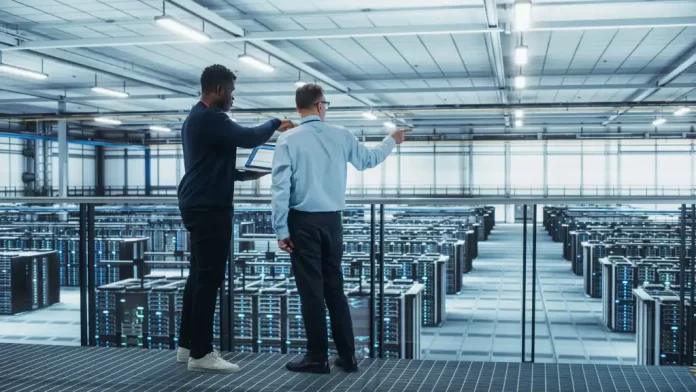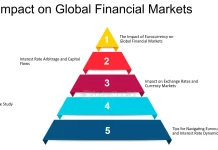Data centres: Juggling sustainability and AI requirements: Utilising hydropower plants and bitterly cold arctic air as renewable power sources, Facebook turned on the lights at its data centre in Luleå, Sweden, which is located on the brink of the Arctic Circle. Underwater data centre relocation was attempted for nine years by Microsoft under Project Natick, which was discontinued last summer 117 feet below the North Sea.
IBM summed up the dilemma as follows: “Organisations have long grappled with challenges associated with energy consumption that accompany traditional data centres, leading to increased operational costs and a notable environmental impact.”
The need for higher processing power and computing capacity increased with the emergence of generative artificial intelligence (AI) experiences. Western Digital’s senior director of sales in India, Khalid Wani, told HT that artificial intelligence (AI) is becoming a necessity for data centre operations due to machine learning and predictive analytics. It is used for equipment failure prediction, proactive issue detection, resource optimisation, and real-time infrastructure monitoring.
According to Statista industry Insights research, the value of the worldwide generative AI industry is expected to increase from $44.89 billion in 2023 to $207 billion by 2030.
In a sense, artificial intelligence has both a positive and negative effect on energy and emissions. The AI component could be especially helpful for data centre management, which calls for cooling systems and sensors. Wani continued, saying that due of “reduced downtime and enhanced security via threat detection,” a decrease in errors translates into increased productivity.
A variety of techniques, such as perimeter cooling, close-coupled cooling, and the more recent direct liquid cooling (DLC) techniques, could be used to cool data centres. 56% of the 1,575 data centres questioned worldwide in the Uptime Institute’s 2023 Global Data Centre Survey still used perimeter cooling, although they thought that a move to DLC techniques will be necessary because to the ongoing rise in silicon power.
Newer processors with AI optimisation were quite important. Google verified that Trillium, its sixth-generation Tensor Processing Unit (TPU), was 67% more energy-efficient than its predecessor in its most recent sustainability report.
A Google-owned and controlled data centre is, on average, almost 1.8 times more energy efficient than a conventional enterprise data centre, according to Kate Brandt, chief sustainability officer of Google. Our data centres’ average yearly power use effectiveness in 2023 was 1.10.
The efficiency of a data centre was measured using a statistic called power usage effectiveness, or PUE. The global average for data centres, according to the Uptime Institute survey, is 1.58 PUE, up from 1.67 in 2019 and 1.98 in 2011.
In 2022, Microsoft’s corporate vice president of cloud operations and innovation, Noelle Walsh, stated, “We strive to become even more efficient with each new generation of data centres, which has a design PUE of 1.12.”
A movement within the industry to develop AI chips as the cornerstone of data centres, cloud services, and AI training was demonstrated by Microsoft’s Azure Maia 100 and Cobalt 100 chips, Amazon’s second-generation Trainium, Meta’s MTIA, and Google’s TPUs.
“AI not only means new and more powerful chips but a very large amount of data being ingested, processed, and stored,” stated Ramanujam Komanduri, country manager at Pure Storage India.
India has a chance because of the country’s growing digitization momentum and its population’s increased access to the internet and applications. Data center-specific consumption was estimated to be approximately 2% of the total electricity used.
He made the following point: “Our effective storage architecture resulted in an 80% cheaper total cost of ownership for Metab’s 100-petabyte AI Research Super Cluster contract with Pure Storage. Because of its efficiency, less floor area, power, and hardware components are needed.
“The digital expansion has made data centres integral to modern life,” stated Captain Ishver Dholakiya, the founder and managing director of Goldi Solar, an Indian tech business that provides renewable power solutions for data centres. The power usage of data centres is expected to rise with the introduction of AI, from 853 MW in 2023 to 1,645 MW by 2026.
In a “growth phase,” the data centre business in India was predicted by research firm CareEdge Ratings to treble its capacity to 2,000 MW by 2026.
In a progress report published in late 2023, the commercial real estate and investment firm CBRE stated that the need for data centres in India was driven mostly by the fintech, healthcare, education, social media, and content delivery sectors. With over 500 MW presently under development, the data centre segment’s fast expansion is expected to continue over 2023–2024, according to the analysis.
Plans for data centres in India were presented by Microsoft, Yotta Data Services, Atlassian, Equinix (collaborating with Oracle Cloud), Amazon Web Services, and Google.





























